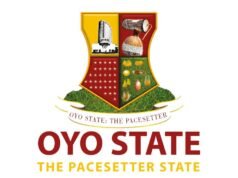Admission To Study And Work In Canada
In this guide we shall walk you through all the processes involved to study and work in Canada. However, let’s first start from what it takes to get an admission to study in Canada.
Understand the Requirements
Successfully applying to a Canadian education institution requires an understanding of different requirements for schools and the courses they offer.
Candidates also need to conduct careful analysis of the rules and regulations applicable to the study permit application process. Only recognized schools and periods of approved study will be meaningful.
Ideally, you should start planning for your Canadian study permit at least a year in advance. Common requirements for all universities and institutions include an updated passport, proficiency in either English or French along with proof of passing prescribed language tests with minimum grades/bands, and proof that you can finance your study as well as the cost of living in the country.
Of course, requirements may vary between provinces, which is why this step must be performed in a careful and systematic manner.
Choose your Course and Institution
The first step towards choosing an institution is to ascertain its status as a Designated Learning Institution. Only DLIs can admit foreign students.
You will be required to finalize a specific major course when applying to study in Canada. The Canadian academic setup is flexible towards switching courses, although it is best to compare your options beforehand and choose a major that you are truly interested in pursuing.
Take the Language Proficiency Test
In order to successfully gain entry into Canada, every international student will have to prove proficiency in English or French. IELTS is the preferred test for proficiency in English, with some institutions also accepting the Cambridge English: Advanced or TOEFL exam score.
For French, you can opt for DALF, DELF, or TCF, although the TEF exam is the most common option.
Choose the test, pay the fee, and book your dates well in advance. Of course, you will have to brush up your language skills to ensure your application does not get rejected.
Apply to Universities
Now it is time to contact your shortlist of universities, obtain their application packs, and submit them well in advance. Having the choice of applying to a dozen universities can be advantageous but you will have to consider the application fee, which varies from $100 to $250.
Do not apply at random. Compare your options, identify your preferred course and institution, and select one or two alternatives as backups.
Be careful when filling in the application form and make sure you provide accurate information backed with documentary evidence. Once this is done, it is time face the excruciating wait until you receive your acceptance. Once you confirm your interest, the university will send an acceptance letter, which plays a significant role in the formalities ahead.
Apply for a Study Permit
Now that you have an institution ready to admit you, it is time to apply for the Canada Study Permit. You can apply online or visit your local visa application centre. Your application must be accompanied by the acceptance letter received in the previous step, your passport, and documentary proof that you have adequate finances to study in Canada.
If you have applied to an institution in the province of Quebec, then you will also receive, along with the acceptance letter, a “Certificat d’acceptation du Québec” (CAQ). Make sure you include this document in your study permit application.
Travel Time
Once the application has been processed and an interview, if required, has been conducted, the immigration officer will decide upon your study permit application. If accepted, it is now time to start planning your travel to Canada.
Your permit will have a start date, which is the date from which the permit comes into force. Keep in mind that you won’t be permitted to enter Canada before this date. Plan your travel accordingly.
Study Time
The immigration officer will verify your permit and other documents at the port of entry before allowing you to enter Canada. This is the final step of the immigration formalities and you can now focus on commencing your journey as an international student in Canada.
What Happens After Your Studies are Completed?
Canada’s federal government covets international graduates as ideal new permanent residents.
They are young, have knowledge of the culture, are proficient in languages, have Canadian qualifications and often work experience.
After graduation, Canada’s Post-Graduation Work Permit allows students to begin their careers.
Recent changes to the Express Entry selection system have made it easier for international students to make the transition to permanent residence.
There are also multiple provincial immigration streams aimed specifically at international students.
Admission To Work In Canada
To work in Canada, you will need to get a work permit. The type of work permit you will get, depends on the type of work you want to do. In this guide, we shall explain the easiest way to get an admission to work in Canada.
Canadian Work Permit Types
There are two types of work permits in Canada:
- Work permits that require a Labour Market Impact Assessment (LMIA)
- Work permits which do not require an LMIA
The purpose of the LMIA is for employers to demonstrate to the Canadian government that the hiring of a foreign worker will not have a negative impact on Canada’s existing workforce. The federal department of Employment and Social Development Canada (ESDC) wants to ensure that the hiring of foreign workers will not displace existing workers in Canada nor place downward pressures on their wages.
Although the LMIA process is the rule, there are many different LMIA-exempt work permits, resulting from free trade agreements, such as the former North American Free Trade Agreement, now known as the Canada-United States-Mexico Agreement, or CUSMA. These free trade agreements enable foreign workers to apply for a work permit without their employer having to obtain an LMIA. In addition to these employer sponsored work permits, there are a number of work permit options available to foreign workers who do not yet have a job offer, including working holidays, post-graduate work permits, and open spousal work permits.









